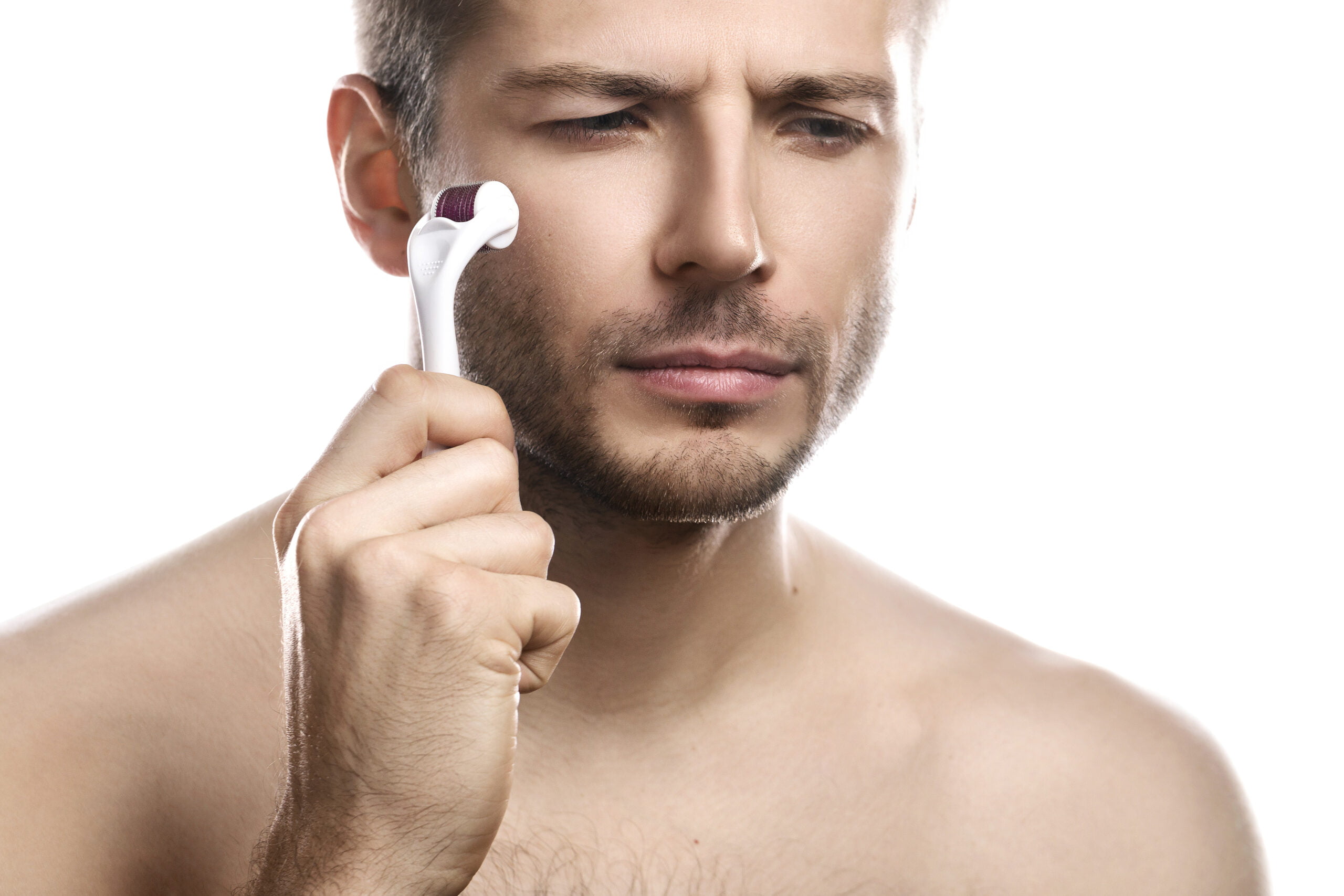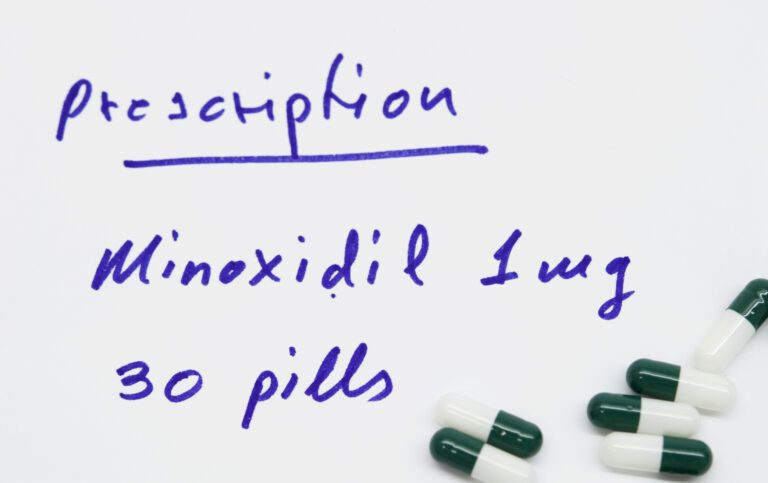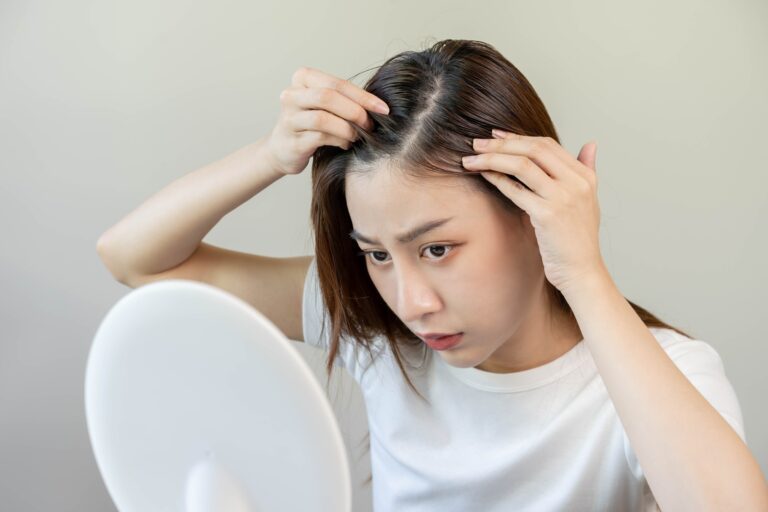Can Microneedling The Wrong Way Damage Your Hair Follicles?
Within the past few years, microneedling has become the holy grail of everything beauty. A lot of people started using derma rollers to treat skin and hair problems, and the results they’re seeing are simply mind-blowing.
With the rising popularity of microneedling, many of us wonder, can microneedling damage hair follicles?
Like every other beauty tool, microneedling can do some damage if not done right. The damage severity depends on the condition of your derma roller and how you use it.
You might’ve heard that using a derma roller made hair worse, but that’s not entirely true. We’re here to explain the damages that could happen by incorrect microneedling and how to prevent them.
What Are the Damages Caused by Microneedling?
Despite all the astounding results of microneedling, the process has a fair amount of risks that might damage your hair. As easy as it is, using a derma roller has a specific technique that needs to be followed precisely.
Beginners who try to apply this technique with large needles for the first time on their own could risk ruining their scalps permanently. Some of the damages include:
1. Damaging the Roots of Your Hair
If you’re new to microneedling and you don’t have enough experience using a derma roller, you could easily hurt yourself. When you use the wrong needle size, or you apply too much pressure while rolling, you’ll dig too deep into your scalp.
If that happens, you could injure your hair follicles. Sometimes these injuries cause permanent damage to your hair roots, and you end up losing more hair than before. So, be careful if you intend to derma roll your scalp by yourself.
To prevent permanently scarring your scalp, we recommend you visit a certified professional with enough experience in correctly using a derma roller. They’ll know the best type of derma roller that suits you and how to use it safely.
2. Cutting off the Hair Shaft
To microneedle your scalp efficiently, you must roll over the same spot multiple times in three different directions. Doing this might cause you to cut off some hairs that get in the way of the derma roller. It’s nothing serious, but you’ll notice that your hair is thinning after every session.
To stop that from happening, we recommend you dampen your hair before starting your microneedling session. Then, only move the derma roller in the same direction as your hair naturally grows, whether you’re rolling vertically, horizontally, or diagonally.
If you move your derma roller back and forth, you’ll risk getting some baby hairs caught in your roller and cutting them off.
3. Getting an Infection
Many people opt for a microneedling session at a spa or a salon. It may be cheaper, but is it worth the risk? Technicians at salons and spas won’t necessarily sterilize their derma rollers as efficiently as a certified specialist.
Remember that microneedling causes microscopic injuries on your scalp and leads to pinpoint bleeding, if you use a contaminated derma roller on your skin, you’ll risk getting an infection. Nobody wants that.
So, you need to ensure that you’re using a clean, sterilized tool to prevent infection or visit a professional specialist instead of a beauty salon or spa technician.
Can Microneedling Cause Temporary Hair Shedding?
Microneedling normally causes mild irritation to your scalp, which makes sense because you’re pushing hundreds of tiny needles into your skin. Sometimes, especially with sensitive skin, you’ll notice a little hair shedding after microneedling.
As long as it’s not too much, there’s nothing to worry about. It actually means that your microneedling session is done correctly, and it’s working! Light shedding usually happens because your hair bulbs are irritated, and it’s causing an inflammatory response.
In other words, light shedding is a sign that your scalp is well exfoliated, and the cell turnover process is happening. Your skin is regenerating new cells that’ll be healthier and stronger. That’s exactly what you want from a good derma-rolling session.
However, if there’s excessive shedding and you’re losing a lot of hair, that’s not normal. Excessive shedding could be a sign of irritation or injury in your scalp. So, you’ll need to visit a specialist to check it out as soon as possible.
What to Avoid After a Microneedling Session?
After finishing your microneedling session, your scalp will be extra sensitive and will require special treatment to avoid adverse effects.
The most important tip is to never wash your hair with shampoo directly after your session. You shouldn’t put anything with soap or chemicals near your scalp before it heals completely, which takes 24 to 48 hours. If you do, you risk increasing your scalp’s irritation.
If you feel like you really need to wash your hair, then only use cool water and gently massage your scalp. Stay away from hot water and, of course, don’t be rough on your skin. It’d be best to skip the gym or any sweat-inducing activity the first few days, again, to prevent irritation.
The second most important tip is to apply a hydrating and soothing oil or serum to your scalp. After microneedling, your scalp will feel dry, itchy, and irritated. However, this is when your scalp can absorb nutrients efficiently.
So, it’s always important to apply oils and serums to relieve the irritation, soothe your scalp, and nourish your hair follicles.
The third tip is to leave your scalp to heal. Don’t try another treatment on your scalp for at least 4 weeks after microneedling. Your scalp must fully recover from the first procedure before going through anything else.
Last but not least, a healthy lifestyle makes everything easier. Stay hydrated, eat clean, and avoid smoking as much as possible to make your healing process quicker and easier.
In Conclusion
Though microneedling is a simple, minimally invasive procedure, it’s still invasive. This means that there are a few ways your session can go south. However, with the right tools, techniques, and aftercare, you won’t have to worry about any of them.







